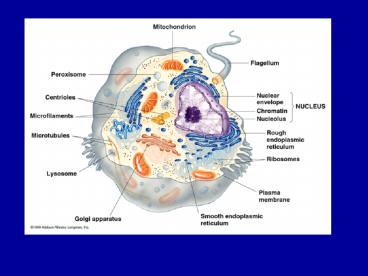Krebs Cycle - PowerPoint PPT Presentation
Title:
Krebs Cycle
Description:
Cellular Respiration: A series of BIOCHEMICAL PATHWAYS the product of 1 reaction is the reactant of the next reaction Occurs in the mitochondria ( & cytoplasm) Is ... – PowerPoint PPT presentation
Number of Views:368
Avg rating:3.0/5.0
Title: Krebs Cycle
1
(No Transcript)
2
ETC occurs here
Krebs Cycle Occurs here
3
Cellular Respiration
- A series of BIOCHEMICAL PATHWAYS the product of
1 reaction is the reactant of the next reaction - Occurs in the mitochondria ( cytoplasm)
- Is the process of creating ENERGYATP!!!!
- food broken down into organic molecules,
ultimately broken down into GLUCOSE - glucose changed into/converted into ATP (ENERGY)
- enzyme controlled
4
CR
- Occurs in BOTH PLANTS AND ANIMALS
- Has 3 stages
- Glycolysis anaerobic w/o Oxygen
- Krebs Cycle (aka Citric acid cycle)
- aerobic
require oxygen - 3. Electron Transport Chain (ETC) -
-
aerobic
5
Glycolysis
- Occurs in the cytoplasm (cytosol)
- Chemical RXN where sugar- GLUCOSE is broken down
into - 2 Pyruvic Acid molecules
- Produces 2 ATP molecules for every 1 glucose
molecule - NAD provides energy for the change (an e- energy
carrier)
6
(No Transcript)
7
Products from Glycolysis move into the
Mitochondria
- THE PRODUCT (Pyruvic Acid) WILL
- THEN BE USED AS THE REACTANT IN
- THE NEXT REACTION
- HenceBiochemical Pathway
8
CK ?? Topic CR Date
10-11-10
- What is the purpose of Cellular Respiration?
- Where are the 2 places does CR occurs?
- What are the 3 stages of CR?
9
CK ?? Topic CR Date
10-11-10
- How many usable ATP result from Glycolysis?
- What is the second stage of CR?
- Where does the second stage take place?
- What does the term aerobic mean?
10
Stage 2Krebs (Citric Acid Cycle)
- Oxygen is required Aerobic Respiration
- A series of chemical rxns a cycle
- Pyruvic Acid is further broken down
- into Acetyl CoA
- CO2 is produced and
- released into the air from animal cells
- Or in plants move to the chloroplasts to be used
for photosynthesis
11
Pyruvic Acid is further broken down
- 2 ATP are produced and
- NADH FADH are produced (high energy electron
carriers) which will provide the energy to bond
the last phosphate in ADP to create ATP!
ENERGY
12
Citric Acid Cycle
- Takes place in
- the matrix of
- the mitochondria
13
In summary
Pyruvic Acid is further broken down into Acetyl
CoA as it enters the Krebs Cycle
14
Stage 3-Electron Transport Chain
15
Stage 3-Electron Transport Chain
- Occurs in the inner Mitochondrial Membrane
- Majority of the ATP (34 ATP) are produced during
ETC - The high-energy electrons produced during the
Krebs Cycle (NADH and FADH2) are used to convert
ADP into ATP
16
Chemical Formula Cellular Respiration
- Sugar Oxygen ? Energy Carbon Dioxide Water
- C6H12O6 6O2 ?36 ATP 6CO2 6H2O
17
Glycolysis
- Goal To break down sugar into 2 Pyruvic Acids
- Who Both plant and animals
- Where In the cytoplasm of the cell
- Products 2ATP, 2NADH, 2 Pyruvic
18
Krebs cycle
- Goal convert (change) the pyruvic acid into
NADH and FADH2
- Where mitochondria
- Products Energy carriers NADH FADH2, CO2
(released to environment) and 2 ATP
19
Electron Transport Chain(chemiosmosis? making
ATP!!)
- Goal break down NADH and FADH2 to produce ATP
- Where Mitochondria membrane
- Products 32 -34 ATP
20
AS A RESULT OF AEROBIC CELLULAR RESPIRATION
- 2 ATP FROM GLYCOLYSIS
- 2 ATP FROM KREBS CYCLE
- 32-34 ATP FROM THE ETC
- TOTAL OF
- 36-38 ATP FOR EVERY MOLECULE OF GLUCOSE
21
IF NO OXYGEN IS AVAILABLE
- Anaerobic Respiration (FERMENTATION)
- Begins with Glycolysis
- DOES NOT REQUIRE OXYGEN
- Also known as FERMENTATION
22
2 types of FERMENTATION
- Alcoholic fermentation
- Lactic acid fermentation
23
Lactic Acid Fermentation
- Pyruvic acid converted (changed) into lactic acid
- Used to make cheese, yogurt, and is the stuff
that accumulates in muscles (sore) - 2 ATP only
24
(No Transcript)
25
Alcoholic Fermentation
- Used to make beer, wine
- Yeast used in process
- 2 ATP only
26
Reproduce Through BUDDING!!
27
- Clearly Not as efficient as aerobic respiration
28
- Photosynthesis and cellular respiration are
opposite rxns.
29
Photosynthesis CRare opposite rxns.
- Photosynthesis
- removes Carbon Dioxide from the atmosphere and
puts back oxygen. - Cellular Respiration
- Removes oxygen from the atmosphere and puts back
carbon dioxide.
30
(No Transcript)































